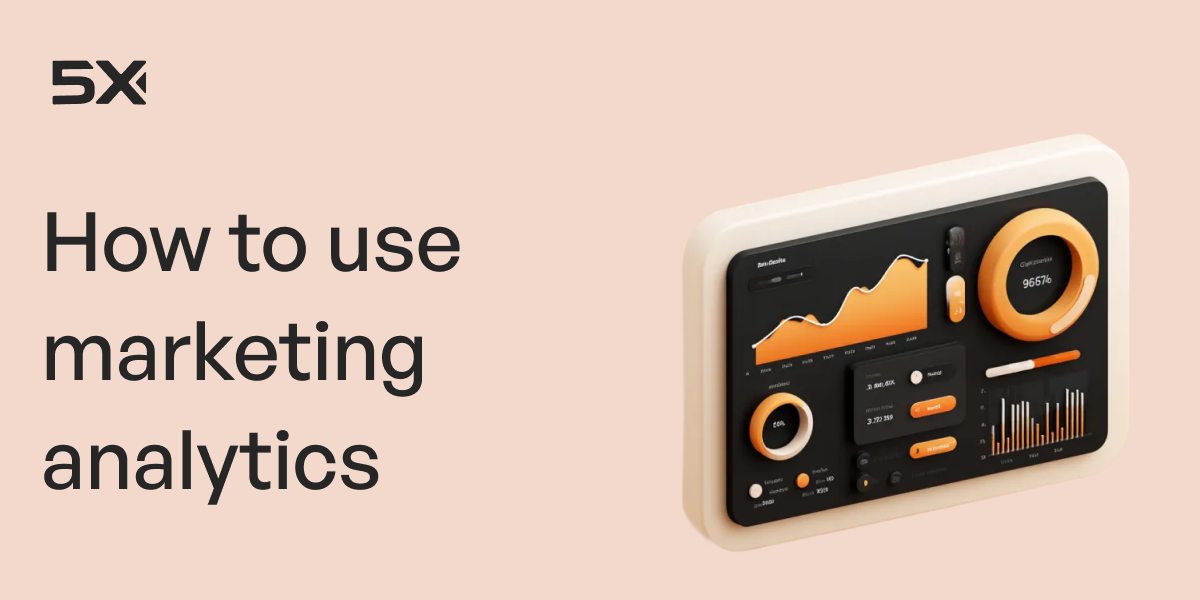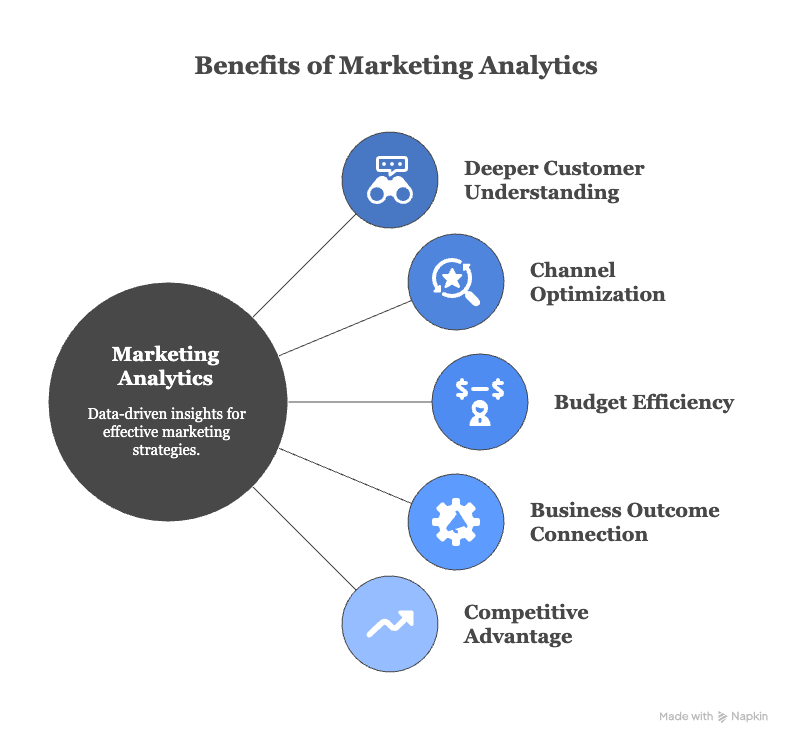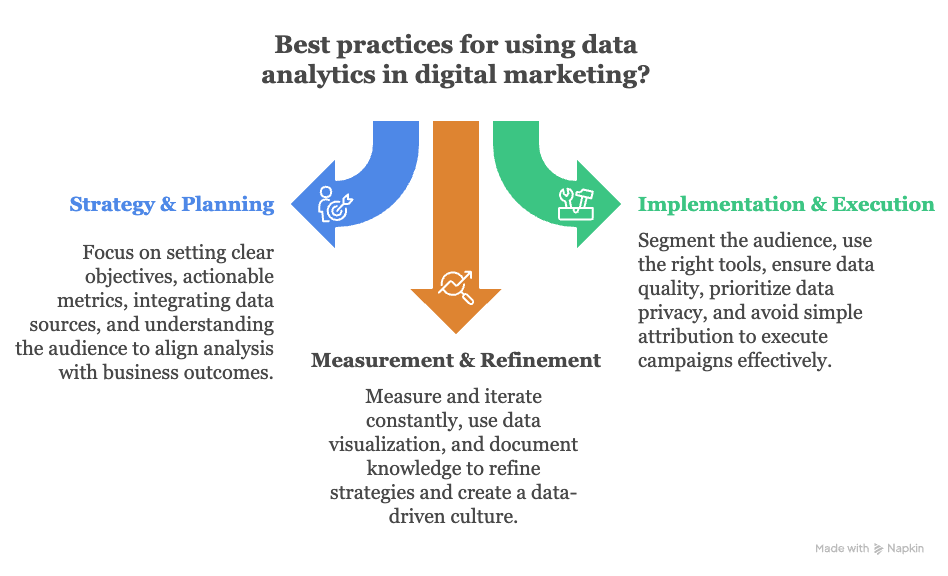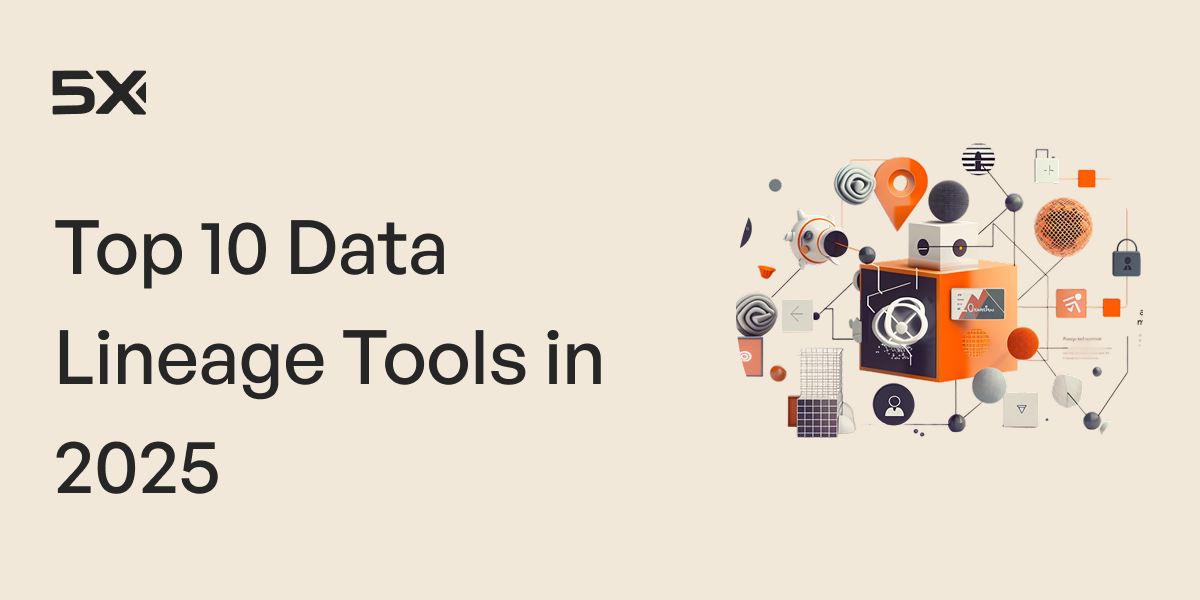How to use marketing analytics to drive revenue growth and customer retention


.png)
Table of Contents
TL; DR
- The four types of marketing analytics are descriptive, predictive, diagnostic, and prescriptive analytics
- Marketing analytics reveals what’s working, what’s wasted, and what drives revenue
- Analytics turns fragmented touchpoints into one connected customer journey view
- It helps marketers understand audiences, personalize experiences, and improve retention.
- Challenges include data privacy, complexity, and ad fraud
- Marketing analytics transforms creative storytelling into measurable business impact
In 2025, CMOs are judged on pipeline impact, CAC payback, and revenue influence. Every campaign, impression, and click demands proof of success in revenue, retention, and ROI.
The challenge is that while marketing data is everywhere, insight is nowhere. And in a world where buyers jump across 10+ touchpoints before converting, marketing analytics can help CMOs truly understand what drives revenue. That’s why leveraging marketing analytics is truly important.
Read this blog to understand marketing analytics and what it can do for your business.
What is marketing analytics?
Marketing analytics is the process of understanding what’s actually working in your marketing and tracking the real numbers behind your campaigns, reading the patterns in customer behavior, and using those insights to improve conversions, reduce CAC, and drive more revenue.
Beyond “reporting”, marketing data analytics is the feedback loop that helps you double down on what moves the needle and discontinue what doesn’t. Here’s what it includes:
- Data collection: Pulling data from every touchpoint including your website, ads, email, CRM, social, SMS, app, campaigns, and anywhere a user interacts
- Performance evaluation: Look at the numbers that matter
- Insight generation: Finding patterns such as why did this LinkedIn ad outperform Meta? Which email sequence boosts demo bookings? Why does one segment convert 2.5x faster?
- Strategy optimization: Then using those insights to adjust better targeting, sharper creative, personalized journeys, improved attribution
- Outcome focus: Marketing analytics exists for one reason → make marketing spend smarter and more profitable.
What can you measure with marketing analytics?
Marketing analytics measures pretty much anything that matters. It gives marketing leaders full visibility into the customer journey from first touch to conversion to lifetime value.
Some examples of what can be measured:
- Average purchase value per customer
- Which channel or campaign drove the first visit
- How customers interact with content (video views, saves, shares, clicks)
- Click-through rate
- Conversion rate from impression to add to cart to purchase
Beyond assessing campaign analytics, the most sophisticated marketing organizations treat customer insights as a strategic IP by analyzing things like:
- Behavioral patterns
- Segment-level responses
- Repeat purchase triggers
- Browsing and drop-off signals
Why should marketing directors care about marketing?
Marketing directors who don’t use analytics are like chefs running a restaurant without tasting the food. You might serve beautiful dishes and spend heavily on ingredients, but without feedback on flavor or customer satisfaction, you have no idea what’s actually working.
Marketing analytics are that crucial taste test. They reveal what delights the audience and what falls flat. Without them, your marketing teams keep serving campaigns they think are effective, but may not be. Over time, budgets get wasted, opportunities slip by, and the marketing team ends up working hard without knowing if anyone’s coming back for seconds.
Benefits of using marketing analytics and why it matters now

Let’s say you launched a Meta campaign, ran a LinkedIn ABM sequence, sent onboarding emails, and published a new landing page. Do you know which action actually led to SQL conversion?
Without analytics, you’re guessing. With analytics, you know.
Marketing analytics also removes the guesswork and tells you what’s driving revenue, who is converting, and where your budget is burning. For marketing leaders, this is how analytics help:
- Understand your customers at a deeper level: Analytics tell you “what happened” and why customers behave a certain way. You can identify patterns, segment behavior, and tailor campaigns that speak to who they are
- Optimize channels based on real performance: Not all channels are created equal. Some touchpoints create intent while others simply create noise. Analytics show you which channels drive actual revenue, not vanity metrics
- Spend your budget like a CFO, not like a marketer: Every dollar should have a job. Analytics exposes waste and highlights pockets of high ROI. If one campaign is producing CAC of $42 and another $128, leadership will always move towards $42. Analytics makes those decisions data-backed, not opinion-driven
- Connect marketing to business outcomes: When you can show “this campaign increased repeat purchases by 18%”, you’re no longer talking in impressions, you’re talking in impact
- Create competitive advantage: Data-driven teams anticipate outcomes instead of blindly reacting to them. They identify upcoming trends, demand spikes, seasonal shifts, and content formats before their competitors can make a move
Types of data analytics for marketing success
Marketers use different kinds of data analytics to plan, run, and improve campaigns, such as:
- Descriptive analytics looks at what has already happened. It studies data from past campaigns to understand trends and patterns, helping marketers plan smarter for the future
- Predictive analytics takes those insights a step further. It uses past data to forecast what customers might do next like who’s most likely to buy or which messages will grab attention
- Prescriptive analytics focuses on action. It pulls data from multiple sources to suggest the best possible steps for influencing customer behavior and improving campaign results
- Diagnostic analytics, sometimes called “root-cause analysis,” digs into why something happened. It helps marketers uncover reasons behind sudden changes or unusual trends, so they can fix problems quickly
How data analytics can help in personalized marketing
Your customers want to see ads that get them. Data analytics steps in to help marketers truly understand who their customers are, what they care about, and when to reach them.
Here’s how analytics makes personalized advertising smarter and more effective:
- Know your audience inside out: With analytics, you can move beyond surface-level demographics to get a 360° view of your customer’s interests, buying habits, and browsing patterns. This allows you to segment your audience into clear groups and speak directly about what each one cares about
- Decode customer behaviour: Analytics tools let you track how people interact with your website, social media, and emails. You start seeing what catches their eye, what they skip, and how they move through the buying journey. These insights help you serve the right message at the right moment
- Predict what they’ll do next: Using predictive analytics, you can anticipate what customers might need before they even search for it. By looking at past behaviour and trends, your campaigns can recommend the next best product or offer
- Personalize in real time: Today’s customers won’t wait and neither should your ads. Real-time data analytics lets you instantly adjust what people see based on how they’re behaving right now. For example, you can show dynamic recommendations to shoppers who are browsing a category before they click away
- Create content that connects: Data shows you which content formats, visuals, and messages actually drive clicks and conversions. Instead of guessing, you can double down on what works, whether that’s a storytelling video, an interactive quiz, or a snappy email headline
- Test, learn, repeat: A/B testing powered by analytics helps you fine-tune your approach. You can compare two ad variations, see which one performs better, and iterate fast. Over time, these small optimizations lead to significant lifts in engagement and ROI
- Map the customer journey: Analytics helps you see the big picture at every touchpoint from the first impression to final purchase. Once you know where your audience drops off or converts, you can design more seamless, personalized journeys that drive action
- Prove what’s working (and what’s not): Analytics makes it easy to tie every campaign back to ROI. You can track conversions, lifetime value, and the exact impact of personalization efforts, ensuring that every ad dollar is backed by data, not gut feeling
Best practices for using data analytics in digital marketing

Your data strategy is a GPS. It only gets you to the right destination if it’s calibrated, connected, and constantly updated. Here’s how you can turn marketing data into smarter decisions:
1. Strategy & planning
- Set clear objectives: Before diving into numbers, define what success looks like. Are you trying to boost conversion rates, increase customer lifetime value, or improve retention? Setting measurable goals helps align analysis with business outcomes
- Focus on actionable metrics: Don’t get distracted by vanity metrics (likes, impressions, or page views) as they don’t tell the full story. Instead, focus on metrics that tie directly to growth, like cost per acquisition (CPA), click-through rate (CTR), or customer retention rate. Example: Starbucks uses loyalty data to track repeat purchase behavior and fine-tune offers
- Integrate data sources: Integrating your CRM, email platform, and ad networks gives you a 360° view of the customer journey, helping you connect the dots between awareness, engagement, and conversion. For example, when Netflix links viewership and subscription data, they explore what people watch and learn why people stay
- Understand your audience: Use data to build detailed customer personas. Beyond demographics, dig into behavioral triggers and preferences. For example, Sephora uses purchase history and browsing data to personalize product recommendations
2. Implementation & execution
- Segment your audience: Treating all customers the same is like sending one message to a million people and hoping it resonates. Audience segmentation helps you target with precision, creating campaigns tailored to different needs and intent levels
- Use the right tools: Invest in analytics tools that provide real-time, accurate data and make visualization easy. Google Analytics, HubSpot, and Mixpanel can help you move beyond tracking to true insight generation
- Ensure data quality: Great insights come from clean data. Implement automated checks and validation pipelines to eliminate inconsistencies or duplicates
- Prioritize data privacy: Transparency isn’t optional anymore. Follow GDPR, CCPA, and other privacy regulations diligently, and make data ethics a part of your brand trust
- Avoid simple attribution: Last-click attribution is outdated. Use multi-touch or data-driven models to understand how each channel contributes across the funnel. This helps allocate budgets more effectively and capture true ROI
3. Measurement & refinement
- Measure and iterate constantly: Analytics is an ongoing process of learning and refining. Run A/B tests, monitor your KPIs, and evolve strategies based on what works
- Use data visualization: Simple, clear visuals drive faster and better decisions. Use dashboards and visuals that help stakeholders quickly grasp trends and insights
- Document and share knowledge: Capture learnings, wins, and failures in one place. Share insights across marketing, sales, and product teams to create a data-driven culture that compounds value over time
Challenges of using marketing data analytics
From data privacy breaches to ad fraud scandals, here are the key roadblocks:
1. Data privacy
Customers today are more aware (and wary) of how their data is collected, stored, and used. So if you’re running data-driven ads, transparency isn’t optional, it’s your license to operate. Communicate clearly how you collect, process, and protect customer data. Because when trust breaks, even the smartest algorithm can’t fix it.
2. Complexity
More data doesn’t always mean better insights. The explosion of big data has created a paradox. Brands have more information than ever, yet fewer clear answers. Without the right tools, infrastructure, and skilled teams, data analytics can quickly turn from an advantage into an operational nightmare. In short: technology and talent go hand in hand. You can’t build a data engine on spreadsheets and good intentions.
3. Ad fraud
Ad fraud happens when fake clicks, impressions, or installs inflate campaign metrics, making ads appear more effective than they really are. This results in wasted budgets and distorted data that corrupt future decisions. Marketing teams must measure smarter, not just more. Use fraud detection tools, vet ad partners rigorously, and rely on data you can independently verify. Because the most expensive ads aren’t always the ones you buy but the ones that never reach a real human.
Turn marketing data into actionable growth with 5X
In most organizations, data lives in silos across CRMs, ad platforms, analytics tools, and spreadsheets, making it hard to see what’s actually driving growth. 5X is a data platform that brings it all together by integrating and governing your data so every stakeholder works from the same accurate view.
With 5X, you can measure ROI across every touchpoint, understand which campaigns fuel conversions, and connect marketing performance directly to business outcomes. It’s how CMOs replace guesswork with confidence and transform marketing from a cost center into a growth driver.
FAQs
Building a data platform doesn’t have to be hectic. Spending over four months and 20% dev time just to set up your data platform is ridiculous. Make 5X your data partner with faster setups, lower upfront costs, and 0% dev time. Let your data engineering team focus on actioning insights, not building infrastructure ;)
Book a free consultationHere are some next steps you can take:
- Want to see it in action? Request a free demo.
- Want more guidance on using Preset via 5X? Explore our Help Docs.
- Ready to consolidate your data pipeline? Chat with us now.
Get notified when a new article is released
Turn data into ROI

How retail leaders unlock hidden profits and 10% margins
Retailers are sitting on untapped profit opportunities—through pricing, inventory, and procurement. Find out how to uncover these hidden gains in our free webinar.
Save your spot






%201.svg)
.png)








